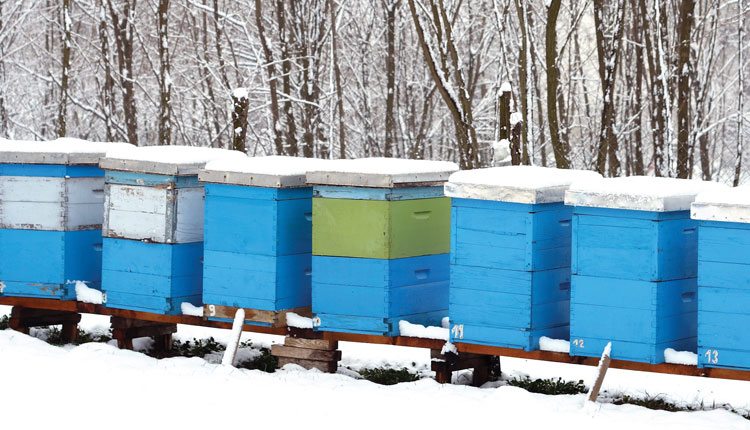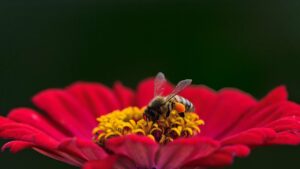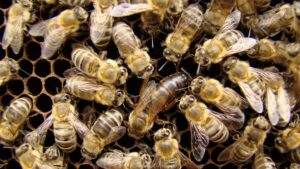The Varroa mite is expected to hit honeybee colonies especially hard this winter.
There’s nothing I enjoy more than getting out in the field and investigating honeybee colonies. All right, maybe there are a few things I enjoy more, but I consider it a “win” any time I get out of the office to work with bees! During these late summer and early fall inspections, which involve evaluating up to a 150 samples taken from different hives across the country, I’ve gotten pretty good at predicting the rate of winter survival of colonies beekeepers can expect.
What I’ve seen so far this year really concerns me.
Since 2013, U.S. beekeepers have been doing better at reducing winter honeybee colony losses. Part of this success comes from better management of a principal cause of these losses — the Varroa mite. However, during my 2015 hive evaluations, I was disturbed to find the vast majority of hives contained mite infestations well above the threshold level of concern.
In the almost 30 years since Varroa was introduced to North America, I’ve learned that a hive containing three Varroa mites per 100 bees suggest that the colony is in trouble. While three mites may not seem like a big deal, remember that a typical colony may contain 40,000 bees — and that equates to more than a 1,000 parasites, which weaken bees through their feeding and disease transmission activities. This year, I’m finding at least two-thirds of the hives I’ve examined contain mite counts above that threshold and many have exceeded seven mites per 100 bees, a level that is almost certain to result in colony failure this winter.
I checked with other honeybee experts to get a sense of what they’re hearing and seeing regarding Varroa infestations this fall and they’ve confirmed my worst fears. Recent scientific presentations at bee health conferences indicate that the U.S. Department of Agriculture is finding infestation levels up to eight mites per 100 bees this fall, which agrees with our own assessment. This does not bode well for honeybee colonies going into winter.
So what’s causing this?
We know that when honeybees are doing well, large infestations of Varroa mites are never far behind. The rule of thumb is that “Varroa does best in strong colonies” but even so, there may be more happening here. For years, management-minded beekeepers have relied on Apivar (amitraz) strips to keep mite infestations in check. This year we’re hearing widespread reports that suggest this treatment isn’t working as well as it has in the past. Our testing suggests that Apivar is still the most effective product out there, but we have seen control failures when re-infestation pressure is high, as well as some tests that show efficacy is lower than expected. Since there are few effective treatments for Varroa and these mites are prone to develop resistance, the potential loss of this acaricide from our management toolbox is very concerning.
What’s most troubling about this unwelcome news is that it should be no surprise, since Varroa has caused massive colony losses before, most recently during the winter of 2012-2013. Since Varroa first became established in North America during the latter half of the 1980s, beekeepers have been playing catch-up in their efforts to manage this parasite. Just a few years ago, the National Honey Bee Health Stakeholder Conference identified Varroa as the “single most detrimental pest” of honeybees and other scientists have shown that it remains a leading cause of colony failure. And despite all the attention focused on honeybee health in the past decade, we seem no closer to solving this particular problem, or preventing these cyclic colony losses.
There Is Hope
This year I had the pleasure of working alongside Dewey Caron and other experts associated with the Honey Bee Health Coalition to release a new Varroa Management Guide, which offers beekeepers practical, effective methods of monitoring and controlling this invasive pest. At Bayer, we are seeking and testing new varroacides, as well as more efficient delivery systems to better manage infestations. Complementing this research is our Smart Hives initiative, which is designed to monitor honey bee colonies remotely and non-invasively, using digital sensor technology to provide real-time alerts that can allow for rapid responses and more effective management practices. Additionally, other scientists are looking to improve honeybee genetics to increase the bee’s tolerance to the Varroa parasite.
For now, there is little beekeepers can do to change the hand they’ve been dealt. Winter normally is a stressful time for colonies, but high mite infestations make this year’s situation particularly challenging and I am expecting the worst. I hope I’m wrong about the consequences associated with the levels of Varroa we’re seeing. Regardless, the two things I’m sure of is that honeybees are not at risk of going extinct, and that beekeepers are an extremely resilient group. I know the bee industry will bounce back as beekeepers adapt and reach new levels of expertise to address what is the ‘new normal’ in apiculture.
As a scientist and beekeeper, I’m frustrated that no “silver bullet” has yet been found to consistently manage the Varroa mite. What I can tell you is that Bayer and other members of our industry won’t stop working until we finally rid ourselves of the damage caused by this destructive pest.














